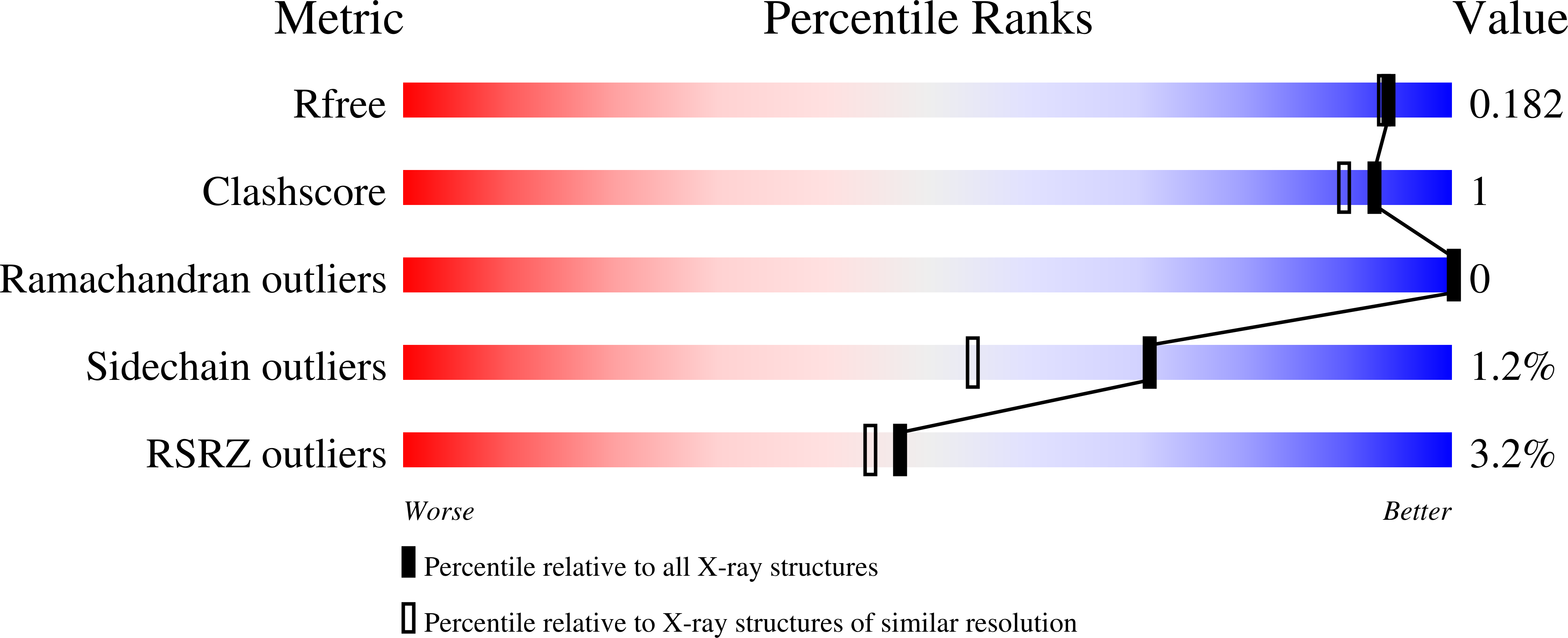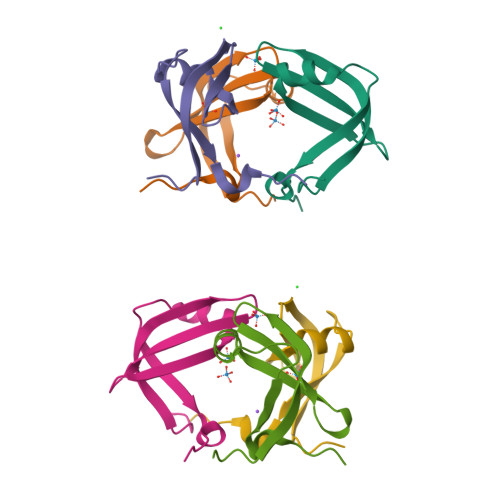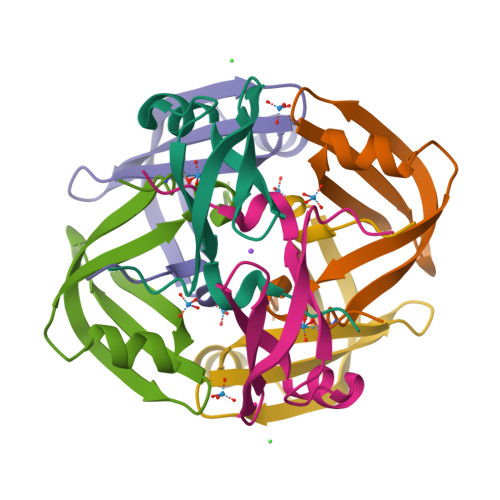Passive Acquisition of Ligand by the Mopii Molbindin from Clostridium Pasteurianum: Structures of Apo and Oxyanion-Bound Forms
Schuettelkopf, A.W., Harrison, J.A., Boxer, D.H., Hunter, W.N.(2002) J Biological Chem 277: 15013
- PubMed: 11836258
- DOI: https://doi.org/10.1074/jbc.M201005200
- Primary Citation of Related Structures:
1GUG, 1GUN, 1GUO, 1GUS, 1GUT - PubMed Abstract:
MopII from Clostridium pasteurianum is a molbindin family member. These proteins may serve as intracellular storage facilities for molybdate, which they bind with high specificity. High resolution structures of MopII in a number of states, including the first structure of an apo-molbindin, together with calorimetric data, allow us to describe ligand binding and provide support for the proposed storage function of the protein. MopII assembles as a trimer of dimers and binds eight oxyanions at two types of binding sites located at intersubunit interfaces. Two type 1 sites are on the molecular 3-fold axis and three pairs of type 2 sites occur on the molecular 2-fold axes. The hexamer is largely unaffected by the binding of ligand. Molybdate is admitted to the otherwise inaccessible type 2 binding sites by the movement of the N-terminal residues of each protein chain. This contrasts with the structurally related molybdate-dependent transcriptional regulator ModE, which undergoes extensive conformational rearrangements on ligand binding. Despite similarities between the binding sites of ModE and the type 2 sites of MopII the molbindin has a significantly reduced ligand affinity, due, in part, to the high density of negative charges at the center of the hexamer. In the absence of ligand this effects the movement of an important lysine side chain, thereby partially inactivating the binding sites. The differences are consistent with a biological role in molybdate storage/buffering.
Organizational Affiliation:
The Wellcome Trust Biocentre, Division of Biological Chemistry and Molecular Microbiology, School of Life Sciences, University of Dundee, Dundee DD1 5EH, United Kingdom.






















